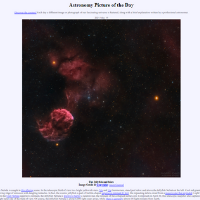The Language of Astronomy with Brian Fulda
In this Space Junk Podcast episode, Tony Darnell from DeepAstronomy is joined by Brian Fulda from the OPT Team to define common words used in the astronomy language.
Whether you're a beginner or advanced astronomer, you might find out something you didn't know before, so get comfortable and pull out your favorite notetaking tool!
Check out the timestamps below for an overview of what words are defined.
About Brian Fulda

Brian is an instructor atOPT University, a daily class offered to the OPT staff. These educational sessions help the OPT team answer questions many astronomers have and help OPT continue to provide excellent customer service.
Also known as absorbingphotons on Instagram, Brian is a notable astrophotographer in the hobby with a stunning collection of images of the night sky.
Time Stamps for The Language of Astronomy
3:09 -DSO (deep space object) vs. solar system/planetary objects
5:51 -What is a nebula?
8:32 -Star clusters
9:18 -Double stars
10:35 -Constellation vs. asterism
13:31 -What is a conjunction?
14:18 -Occultation
15:15 -What is a transit?
17:30 -What is an eclipse?
18:54 -What is the difference between a solar eclipse and lunar eclipse?
20:37 - What is a celestial sphere?
23:35 - What is a celestial equator?
24:04 - What is a celestial pole?
25:40 - If you pointed a camera at the north star - Polaris, what would you see?
27:16 - Degrees, coordinates, arc seconds - what are they?
29:15 - What is a zenith?
29:51 - What is the ecliptic?
32:23 - What is the meridian?
33:46 - Light years, astronomical unit, parsec, megaparsec - what are they?
36:43 - Telescope mount and eyepiece
39:08 - Aperture
39:52 - Focal length
40:26 - Focal ratio
41:58 - Advantages and disadvantages of slow vs. fast telescopes
46:03 - Magnification - What is it? How to calculate it?
51:12 -Seeing
55:38 - Telescope types
57:05 - Doublets, triplets, quadruplets?
1:01:09 - Barlows& tele-extenders
What is your favorite space object? Let us know in the comments below!











